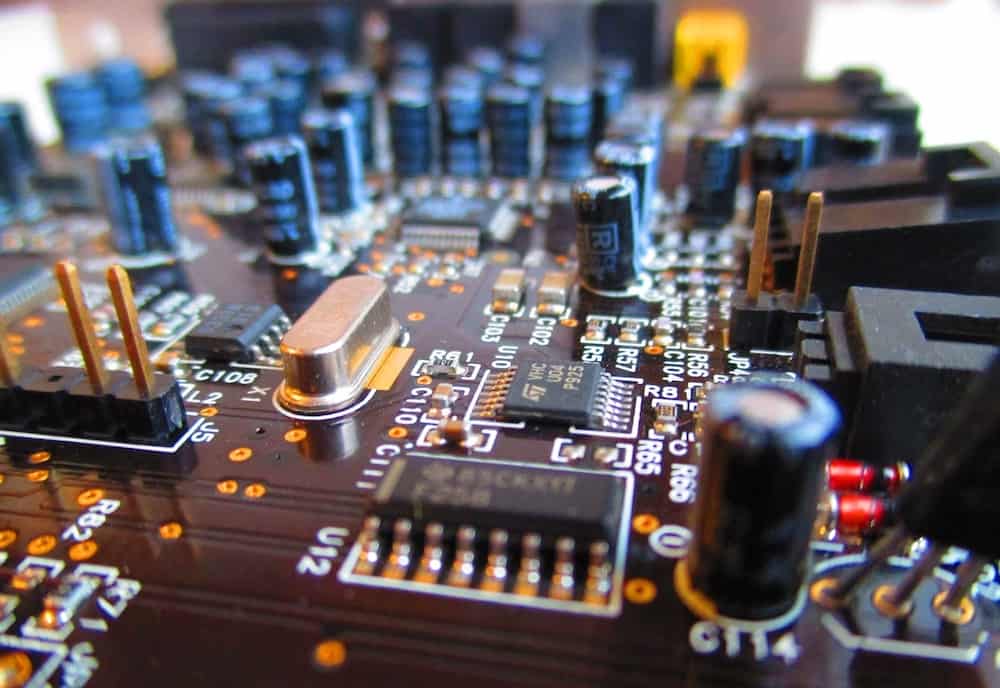
[Image above] Current electronics are reaching the limits of how much more they can improve. Elastic strain engineering is an emerging technique that may enhance the properties of semiconductors. Credit: Pixabay
During my first year of glass research in college, I became familiar with modifying a material’s electronic properties through doping.
Doping is intentionally introducing impurities into a material to change its structure and, thereby, its properties (be that electronic, optical, magnetic, phononic, or catalytic, among others).
In my case, adding trace amounts of other elements into the glass composition was a simple task. However, there are limits to doping certain materials, and so alternative methods for tuning properties are needed as well.
Elastic strain engineering (ESE) is an emerging technique for enhancing the performance of functional materials. Instead of introducing impurities, such as in doping, ESE tunes a material’s properties solely through the introduction of controlled mechanical strain.
ESE is of particular interest for modifying the properties of semiconductors, such as silicon and diamond, as researchers look to push the capabilities of next-generation electronics. However, “The complexity of modulating the fundamental physical properties of materials, such as the electronic band structure and bandgap through ESE, calls for identifying preferred and actionable strain states within the general six-dimensional (6D) strain space,” researchers write in a recent open-access paper.
The researchers are part of a yearslong international collaboration between Skolkovo Institute of Science and Technology (Russia), Massachusetts Institute of Technology (U.S.), and Nanyang Technological University (Singapore).
They previously used simulations to explore how strain affects the electrical properties of diamond, but their new study aims to accelerate the exploration of strain effects using an expanded machine learning framework.
As they explain in the paper, determining how strain will affect a semiconductor’s properties is a complex task.
“To picture the complexity of this task, consider for example a crystal’s electronic band structure En(k; ε), which is a function of the 3-dimensional wave vector and the six-dimensional homogeneous strain tensor ε. Representing these band structures with a tabulation approach with 9 dependent variables would obviously require billions of first-principles calculations,” they write.
In addition, calculations based on density functional theory can introduce systematic errors in estimating the bandgap, which must be overcome by using more expensive calculation techniques, such as many-body perturbation theory (GW corrections).
To address the challenge of calculating, analyzing, archiving, and visualizing material characteristics from high-dimensional data, the researchers previously developed a machine learning method that combined a dataset extracted from density functional theory calculations invoking GW correction with another dataset prepared with Perdew-Burke-Ernzerhof exchange functional correlations.
However, while this early machine learning method was adequate for rapid data collection in a highly specialized model, “[the calculations] do not offer sufficient flexibility and accuracy for optimizing a broader consideration of physical characteristics such as the effective mass of electrons and holes,” they write.
In the new study, the researchers expanded their machine learning method to incorporate a priori physics-informed neural network architectures into the calculations in such a way that various performance characteristics and figure-of-merit estimates could be better optimized.

The entire machine learning scheme involves pre-train, data fusion, and active learning. The solid arrows show the workflow, and clock symbols indicate the relative time required for ab initio calculations. Credit: Tsymbalov et al., npj Computational Materials (CC BY 4.0)
They tested their updated machine learning method by identifying energy-efficient pathways to “metallize” diamond, i.e., turn it into an electrical conductor while preserving phonon stability. “These results extend our deep learning analytical capabilities beyond those used previously to identify the conditions for the metallization of diamond using ESE,” they write.
The researchers conclude that because the expanded method recognizes that the band dispersion is structured and highly correlated with certain materials values, it provides better approximation and less uncertainty in the estimation of key figures of interest, such as curvature of the electronic band and the effective mass of electronics and holes.
“The general ML [machine learning] framework we propose here thus effectively alleviates the heavy dependence upon DFT [density functional theory] calculation, which takes up about 99% of the model construction time in an otherwise typical first-principles materials design project without ML,” they write.
The researchers now are working on their next paper, which is devoted to modeling the boundaries of admissible elastic strains. They also want to acknowledge that since this paper published, Ph.D. students Evgenii Tsymbalov of Skoltech and Zhe Shi of MIT successfully defended their theses.
The open-access paper, published in npj Computational Materials, is “Machine learning for deep elastic strain engineering of semiconductor electronic band structure and effective mass” (DOI: 10.1038/s41524-021-00538-0).
Author
Lisa McDonald
CTT Categories
- Electronics
- Modeling & Simulation

